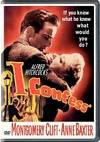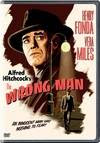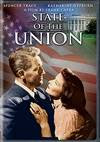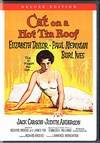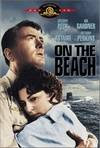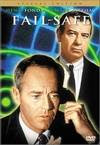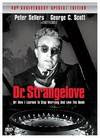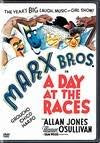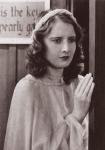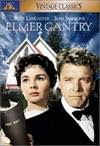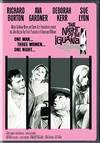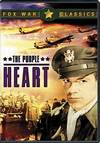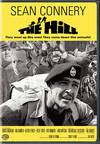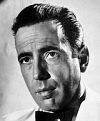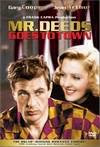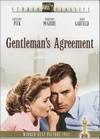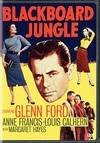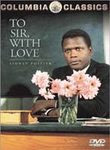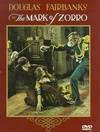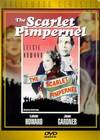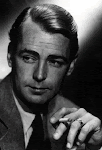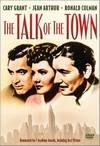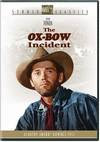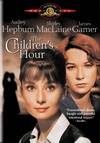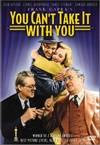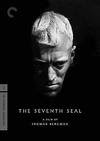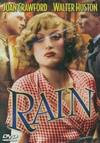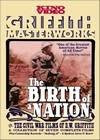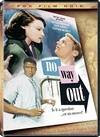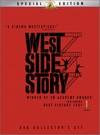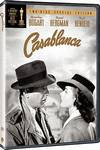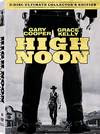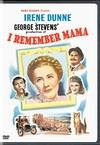Rain
Imitation of Life
The Boys in the Band
If you have read my previous postings, you already know that I was a black child who grew up in a white neighborhood. You will also know that I allowed homophobia to cloud some of my youthful decisions. So I guess you could say that I am no stranger to what society refers to as an “identity crisis.”
However, before I begin the discussion of the above movies, I would like to point out that I have always been comfortable in my skin. I never doubted my racial identity; my parents – and, unbeknownst to them, my neighborhood friends – made sure of that. Also, I never doubted my heterosexuality; I’ve found untold joy in kissing females other than family members since I was six years old. Additionally, I’ve always found it easy to make friends and never particularly cared about their race or sexual orientation. But I have to admit that at times as a child and as a young adult, I feared that people might mistake me for a homosexual – apparently an easy thing to do because I am an educated black man who can speak English without any trace of ghettoese.
As I grew older, however, I learned to stop worrying about other people’s misconceptions. In fact, I began to enjoy them. It amused me that I could see the apprehension and fear in the eyes of whites, especially women, when we passed on the street. And once, I was coaching my son’s soccer team when a drunken black man asked me, through a chain-link fence, if I was “you know, funny,” I asked him if he would feel threatened by it if I were. He replied simply, Yes.” I replied, “Good” and then turned and walked away. My son, who was with me during this exchange, said as we returned to the team, “That guy was stupid, Daddy.” I had to agree.
An identity crisis also can make people ask themselves – and others – stupid questions. And if those questions are not answered satisfactorily, they could lead a person to do stupid, self-destructive things – as I will demonstrate with the help of the movies Rain (released in 1932 in black and white), Imitation of Life (1934, b&w) and The Boys in the Band (1970, color).
Rain is the first talking version of the story of Sadie Thompson. The story’s first cinematic production was made toward the end of the silent era in 1928 and was titled Sadie Thompson. A color version, titled Miss Sadie Thompson, was made in 1954. But my favorite is the 1932 version. It is a story in which we see two people dealing with issues of identity.
The story begins when a ship arrives at a South Seas island. Among those embarking are Sadie Thompson, a woman with the reputation of being a loose and unsavory, and a supposedly pious missionary named Alfred Davidson and his wife. Davidson makes it his mission to turn Sadie into an honorable woman and spends most of the movie haranguing her about her evil ways. Sadie, naturally, resists the attempts to save her soul. Davidson eventually threatens to have the governor of the island send Sadie to San Francisco, where she is apparently wanted by the police. Sadie has other plans – Australia. While the two argue about her fate, she has an epiphany, of sorts, and decides that she should change her ways and return to San Francisco to face the music, after which she can become a virtuous woman.
Ah, but Davidson proves not to be the man he thinks he is. After the conversion of Sadie, he rapes her. Then, unable to face his own duplicity, he commits suicide. And Sadie? She reverts to her old self and accepts the invitation of a man named O’Hara, who has been wooing her throughout the movie, to go with him to Australia.
Imitation of Life was remade in 1959 in color. Again, if I have a choice between a black and white movie or a remake of that movie in color, I’ll usually chose the black and white version. But there is another reason I prefer the older telling of this tale; it includes a rare display of racial equality that the color version lacks. The story is about two women – one white, named Beatrice Pullman; one black, named Delilah Johnson; both heterosexual – who decide to live together and raise their children, two girls (Jessie and Peola, respectively), together. Now when I say “raise their children together” you should understand that Delilah is considered by the primary caregiver by both children. But in the original version, the two women become business partners who make their money by marketing Delilah’s pancake recipe. In the color version, the black woman appears to be more of a servant that a partner.
Neither of these women have a husband. Beatrice is a widow and I don’t remember any mention of Delilah’s. However, I assume the father of Delilah’s child is white because her daughter Peola’s fair skin suggests as much. And Peola’s fair skin creates the girl’s identity crisis.
The first sign of Peola’s crisis arises when Delilah shows up at her daughter’s class. When the teacher asks her why she’s there, Delilah tells the teacher that she is bringing her daughter her lunch. After the teacher tells Delilah that she doesn’t have any colored children in her class, Delilah points out “her baby” – which surprises both the teacher and the students and embarrasses Peola. When they return home, Delilah tries to console her daughter and tell her that she shouldn’t try to pass for white. But Peola refuses to listen and refuses to return to that school.
When Peola is old enough to leave home, she also leaves town to start a new life as a waitress in a whites-only restaurant in Virginia. Delilah eventually tracks her down and confronts Peola at the eatery. Peola denies any relationship to Delilah in front of her boss and customers, but they do go home together after the incident. Once home, Peola announces that she plans to leave again and tells Delilah that she doesn’t ever want to see her again. Delilah, heartsick by her daughter’s rejection of her and her race, becomes gravely ill, losing her will to survive. On her deathbed, Delilah asks Beatrice to take care of Peola, should she ever return.
Well, Peola does return, just in time for Delilah’s funeral. She throws herself on her mother’s casket, sobbing uncontrollably and filled with regret for that way she treated her mother.
The Boys in the Band is about a birthday party attended by a group of gay men. Before the party begins, Michael, one of the party planners, receives a phone call from Alan, a heterosexual college classmate who wants to pay Michael a visit and agrees to come to the party.
During the visit, Alan is visibly uneasy about being surrounded by the group of gay men. But then again – to my eye, anyway – they all seemed somewhat uneasy with each other, with one possible exception. Don’t get me wrong: These admittedly gay men appear to have genuine affection for each other. However, they also relentlessly hurl insults at each other. This affection tinged with contempt tells me that there is a lot of self-loathing at that party. And the presence of Alan, who we are told had rejected Michael’s advances during their college days, left me believing that he, too, was wondering about his own sexual identity. Michael’s accusation that Alan was hiding his own homosexual desires confirmed my suspicions.
The boys play a party game that involves calling the person they loved the most and telling that person how they feel. A couple of the callers make feeble attempts to fulfill the game’s requirements, but one caller – Hank, who came to the party with Larry, his apparent lover – calls Larry’s answering service to leave a message that he (Hank) does love him (Larry). This call showed me that Hank was probably the only one of them who was comfortable with his sexuality. And although Alan called his former wife to tell her how much he loved her, which seemed to upset Michael, it didn’t convince me that he was completely sure of his sexuality.
The questions “Who and I” and “What am I” created havoc and pain in all three movies. In Rain, Davidson’s sudden realization of who he really was resulted in his suicide and absolved Sadie of the guilt that led to her epiphany. After all, if even pious missionaries were lecherous pigs, how was if fair that she should be chastised for being the party girl who she enjoyed being. In Imitation of Life, it took the death of Delilah to make Peola realize that despite her fair features, she was her mother’s child and she was wrong to try to deny that. As for The Boys in the Band, the only violence was the verbal abuse and hurt feelings that they heaped upon each other.
Ironically, Rain – the oldest of the three movies – is the one that would be most believable in today’s setting. Because of societal advances – including the election of a black man as president of the United States and the widespread acceptance of interracial and gay relationships, marriage and civil unions – fewer light-skinned blacks feel the need, or desire, to pass as whites; and fewer gays feel conflicted about their sexual identities. And that’s a good thing.
But remember that even though the times they are a changing, it always helps to take a look back and remember that things weren’t always as they are now.
Thursday, February 26, 2009
Saturday, February 21, 2009
The Feminists' Feminist
Woman of the Year
Adam’s Rib
Pat and Mike
As you might have noticed, I have not discussed the actors in any of the previous movies that I have discussed. The reason being that while the acting in those films has been nothing short of excellent, I have chosen to focus on the content of the movies and not those portraying the characters. I am making an exception to this rule in this case because the star of the movies I am about to discuss represents for me not just an actress playing feminist roles, but because her personal life always has been a model for the feminist movement even before it was known as such.
However, I am not going to discuss the personal life of Katherine Hepburn, or her off-screen relationship with Spencer Tracy, her co-star in these three movies. For those of you who aren’t aware of Hepburn’s history, there are plenty of other sources that provide that information.
I also want to say that while the Hepburn-Tracy coupling produced some great comedies, I personally enjoy her comedic outings with Cary Grant more – especially the screwball romp Bringing Up Baby and the sophisticated The Philadelphia Story. But when it comes to films that focus on the relationship between man and woman and its affect on feminism, nothing beats the low-key comedies Woman of the Year (released in 1942 in black and white), Adam’s Rib (1949, b&w) and Pat and Mike (1952, b&w).
Woman of the Year begins with a feud between two colleagues from the same New York City newspaper – sports reporter Sam Craig and political columnist Tess Harding. This feud is carried out on the pages of their paper. The paper’s editor steps in and introduces his two employees to each other. Suffice it to say, the two become smitten with each other – Sam initially being attracted by a very unfeminist and somewhat vain act by Tess: straightening her stockings while sitting on a desk. Tess lets her interest show when after the meeting, as Sam rushes down a flight of stairs to catch up to her, she pops into his face after coyly hiding behind the wall at the bottom of the stairs and asks for a light for her cigarette.
Sam then asks her to attend a baseball game with him and by the end of it, Tess not only finds that she enjoys the game but also makes friends with several rough-and-tumble spectators. Tess reciprocates by asking Sam to her apartment. Sam, who apparently thinks they will be alone, finds he is surrounded by Tess’ upper-crust guests and becomes particularly annoyed by her male secretary, Gerald. But the romance blossoms and they decide to marry.
However, problems for Sam arise immediately. The rushed wedding must take place in South Carolina, without the presence of Sam’s mother, to accommodate Tess’ diplomat father and famously feminist aunt. Then after the vows, Tess receives an important phone call that she must take and the wedding night is interrupted by a political refugee and his colleagues. During the ensuing months, the two see very little of each other because their competing schedules.
Then, Sam learns that Tess has adopted a refugee child. Although Sam wants children of his own, he does like the boy. Sam does not like, however, Tess’ apparent neglect of the child – neglect that is the result of her busy schedule. Nonetheless, Tess is nominated for a Woman of the Year award. On the night of the presentation, Tess mentions that the child will have to be left alone while they attend the ceremony. Angry about this further sign of Tess’ neglect, Sam refuses to leave the boy alone and while Tess is at the ceremony, he takes the child back to the agency from which he came. When Tess returns home with photographers to take pictures of the “happy” family, she is stunned to learn that Sam has apparently walked out on her and has returned the child. When Tess goes to retrieve the boy, it becomes obvious to her that he doesn’t want to go home with her.
Eventually, Tess decides she wants to win Sam back. She finds out where he lives and goes to the apartment, while he is sleeping, to prepare breakfast for him. This is her attempt to show him that she can be as a good wife as she is a feminist. Sam awakens to find her in the kitchen having difficulty making coffee and waffles. Sam, who appears amused by the failures, tells Tess that he really doesn’t care about that stuff – all he wants is for her to put her family ahead of anything else, to which she readily agrees.
In Adam’s Rib, two married attorneys – prosecutor Adam Bonner and defense lawyer Amanda Bonner – find themselves on opposite side of a case in which a woman is accused of shooting, but not killing, her philandering husband. And while all this is going on, Amanda is being wooed by their across-the-hall neighbor, Kip Laurie.
Of course, the case attracts a lot of publicity and after the first day of the trial, Adam tries to talk Amanda into bowing out – which she refuses to do. As the case continues, Amanda uses tactics of which Adam disapproves. For instance, Adam protests against a woman’s use of tears to elicit sympathy to her cause. Then, calling the tactic dishonest, he shows Amanda how easy it is to make tears fall from his eyes. Tensions between the two rise to the point that while Adam, at their apartment, is giving Amanda a massage and as they are discussing the trial, he smacks her rather hard on the bottom. She takes offense and walks out after kicking him in the shin.
Amanda wins the case and the woman is acquitted. On his way home after the trial, Adam – who has always been aware of Kip’s campaign to seduce his wife – sees Kip and Amanda in a mildly compromising position. He confronts them and threatens them with a gun. Amanda complains that Adam has no right to harm them because of jealousy. At that point, Adam pits the gun in his mouth and begins to chew it. The gun is made of licorice and Adam is satisfied that he has gotten Amanda to admit that the prosecution of the acquitted wife was justified.
Pat and Mike is the story of a female athlete and her manager. At the outset, Pat is engaged to a professor at the college where she works as a physical education instructor. She is a very good athlete in several sports – particularly golf and tennis – who freezes up whenever her overbearing fiancé, Collier Weld, is around. But Mike sees Pat’s potential during a golf tournament in which she and the legendary Babe Didrickson are competing. Pat has a chance to win the tournament, but Collier’s appearance at the final hole unnerves her and she winds up settling for second place. After the tournament, Mike is able to convince her to join his stable of athletes, which includes a boxer named Davie.
As the story progresses, Pat comes to trust the restrictions Mike places on her and Mike learns to appreciate Pat for more than her athleticism. For instance, when Davie begins losing confidence in himself, Pat restores it with a pep talk that calms his anxieties. When Mike questions her about the talk, Pat asks if she has done something wrong. Pat assures her that it was alright, giving her free rein to help any of his other athletes who come to her.
For me, the best scene of the movie is when Mike is confronted by three men who own a share of Davie and are upset that he didn’t throw a fight as they had requested. As Mike is prepared to take his beating, Pat comes to the rescue, disarms them of a blackjack and leaves them sprawled on the ground – to the delight of witnesses and the embarrassment of Mike.
Later during a tennis match, Mike notices that Pat loses her concentration when Collier is around. Mike confronts Collier and tells him to stay away from venues where Pat is competing. Collier refuses, claiming the rights of a fiancé. Then during a golf tournament, Collier shows up and again unsettles Pat. That evening, Collier sees Mike leaving Pat’s bedroom and becomes furious. Mike explains to both Collier and Pat that he always checks on his athletes after they go to sleep, closing windows and making sure they are tucked tightly into bed. Collier doesn’t buy it, however, and the engagement ends. Pat, however, seems to appreciate these things that she hadn't known Mike was doing.
The next day, Pat has to make a crucial putt and looks up to see Collier. Shaken, she then looks for Mike. His smile calms her and she easily sinks it. As they walk off the green it becomes obvious that these two people are headed for the altar.
What I like most about these three pictures is that although Katherine Hepburn portrays strong women in each, she also points out the faults of each. In Woman of the Year, she comes to understand that since she decided to have a family, that family should be at least as important – and if not, then more important – than her work. And gentlemen, this lesson should apply to you as well. In Adam’s Rib, she is forced to acknowledge that winning is not necessarily an accurate measure of right and wrong. And in Pat and Mike, she learns to overcome insecurities with the love and affection of a partner whom she knows loves and cares for her.
One final thought: Katherine Hepburn’s roles retain a fighting spirit that is best summed up at the end of Adam’s Rib. After learning that Adam may run for election to a county judgeship as a Republican, Amanda wants to know if the Democrats have selected their candidate for that post yet.
Ya gotta love that woman!
Adam’s Rib
Pat and Mike
As you might have noticed, I have not discussed the actors in any of the previous movies that I have discussed. The reason being that while the acting in those films has been nothing short of excellent, I have chosen to focus on the content of the movies and not those portraying the characters. I am making an exception to this rule in this case because the star of the movies I am about to discuss represents for me not just an actress playing feminist roles, but because her personal life always has been a model for the feminist movement even before it was known as such.
However, I am not going to discuss the personal life of Katherine Hepburn, or her off-screen relationship with Spencer Tracy, her co-star in these three movies. For those of you who aren’t aware of Hepburn’s history, there are plenty of other sources that provide that information.
I also want to say that while the Hepburn-Tracy coupling produced some great comedies, I personally enjoy her comedic outings with Cary Grant more – especially the screwball romp Bringing Up Baby and the sophisticated The Philadelphia Story. But when it comes to films that focus on the relationship between man and woman and its affect on feminism, nothing beats the low-key comedies Woman of the Year (released in 1942 in black and white), Adam’s Rib (1949, b&w) and Pat and Mike (1952, b&w).
Woman of the Year begins with a feud between two colleagues from the same New York City newspaper – sports reporter Sam Craig and political columnist Tess Harding. This feud is carried out on the pages of their paper. The paper’s editor steps in and introduces his two employees to each other. Suffice it to say, the two become smitten with each other – Sam initially being attracted by a very unfeminist and somewhat vain act by Tess: straightening her stockings while sitting on a desk. Tess lets her interest show when after the meeting, as Sam rushes down a flight of stairs to catch up to her, she pops into his face after coyly hiding behind the wall at the bottom of the stairs and asks for a light for her cigarette.
Sam then asks her to attend a baseball game with him and by the end of it, Tess not only finds that she enjoys the game but also makes friends with several rough-and-tumble spectators. Tess reciprocates by asking Sam to her apartment. Sam, who apparently thinks they will be alone, finds he is surrounded by Tess’ upper-crust guests and becomes particularly annoyed by her male secretary, Gerald. But the romance blossoms and they decide to marry.
However, problems for Sam arise immediately. The rushed wedding must take place in South Carolina, without the presence of Sam’s mother, to accommodate Tess’ diplomat father and famously feminist aunt. Then after the vows, Tess receives an important phone call that she must take and the wedding night is interrupted by a political refugee and his colleagues. During the ensuing months, the two see very little of each other because their competing schedules.
Then, Sam learns that Tess has adopted a refugee child. Although Sam wants children of his own, he does like the boy. Sam does not like, however, Tess’ apparent neglect of the child – neglect that is the result of her busy schedule. Nonetheless, Tess is nominated for a Woman of the Year award. On the night of the presentation, Tess mentions that the child will have to be left alone while they attend the ceremony. Angry about this further sign of Tess’ neglect, Sam refuses to leave the boy alone and while Tess is at the ceremony, he takes the child back to the agency from which he came. When Tess returns home with photographers to take pictures of the “happy” family, she is stunned to learn that Sam has apparently walked out on her and has returned the child. When Tess goes to retrieve the boy, it becomes obvious to her that he doesn’t want to go home with her.
Eventually, Tess decides she wants to win Sam back. She finds out where he lives and goes to the apartment, while he is sleeping, to prepare breakfast for him. This is her attempt to show him that she can be as a good wife as she is a feminist. Sam awakens to find her in the kitchen having difficulty making coffee and waffles. Sam, who appears amused by the failures, tells Tess that he really doesn’t care about that stuff – all he wants is for her to put her family ahead of anything else, to which she readily agrees.
In Adam’s Rib, two married attorneys – prosecutor Adam Bonner and defense lawyer Amanda Bonner – find themselves on opposite side of a case in which a woman is accused of shooting, but not killing, her philandering husband. And while all this is going on, Amanda is being wooed by their across-the-hall neighbor, Kip Laurie.
Of course, the case attracts a lot of publicity and after the first day of the trial, Adam tries to talk Amanda into bowing out – which she refuses to do. As the case continues, Amanda uses tactics of which Adam disapproves. For instance, Adam protests against a woman’s use of tears to elicit sympathy to her cause. Then, calling the tactic dishonest, he shows Amanda how easy it is to make tears fall from his eyes. Tensions between the two rise to the point that while Adam, at their apartment, is giving Amanda a massage and as they are discussing the trial, he smacks her rather hard on the bottom. She takes offense and walks out after kicking him in the shin.
Amanda wins the case and the woman is acquitted. On his way home after the trial, Adam – who has always been aware of Kip’s campaign to seduce his wife – sees Kip and Amanda in a mildly compromising position. He confronts them and threatens them with a gun. Amanda complains that Adam has no right to harm them because of jealousy. At that point, Adam pits the gun in his mouth and begins to chew it. The gun is made of licorice and Adam is satisfied that he has gotten Amanda to admit that the prosecution of the acquitted wife was justified.
Pat and Mike is the story of a female athlete and her manager. At the outset, Pat is engaged to a professor at the college where she works as a physical education instructor. She is a very good athlete in several sports – particularly golf and tennis – who freezes up whenever her overbearing fiancé, Collier Weld, is around. But Mike sees Pat’s potential during a golf tournament in which she and the legendary Babe Didrickson are competing. Pat has a chance to win the tournament, but Collier’s appearance at the final hole unnerves her and she winds up settling for second place. After the tournament, Mike is able to convince her to join his stable of athletes, which includes a boxer named Davie.
As the story progresses, Pat comes to trust the restrictions Mike places on her and Mike learns to appreciate Pat for more than her athleticism. For instance, when Davie begins losing confidence in himself, Pat restores it with a pep talk that calms his anxieties. When Mike questions her about the talk, Pat asks if she has done something wrong. Pat assures her that it was alright, giving her free rein to help any of his other athletes who come to her.
For me, the best scene of the movie is when Mike is confronted by three men who own a share of Davie and are upset that he didn’t throw a fight as they had requested. As Mike is prepared to take his beating, Pat comes to the rescue, disarms them of a blackjack and leaves them sprawled on the ground – to the delight of witnesses and the embarrassment of Mike.
Later during a tennis match, Mike notices that Pat loses her concentration when Collier is around. Mike confronts Collier and tells him to stay away from venues where Pat is competing. Collier refuses, claiming the rights of a fiancé. Then during a golf tournament, Collier shows up and again unsettles Pat. That evening, Collier sees Mike leaving Pat’s bedroom and becomes furious. Mike explains to both Collier and Pat that he always checks on his athletes after they go to sleep, closing windows and making sure they are tucked tightly into bed. Collier doesn’t buy it, however, and the engagement ends. Pat, however, seems to appreciate these things that she hadn't known Mike was doing.
The next day, Pat has to make a crucial putt and looks up to see Collier. Shaken, she then looks for Mike. His smile calms her and she easily sinks it. As they walk off the green it becomes obvious that these two people are headed for the altar.
What I like most about these three pictures is that although Katherine Hepburn portrays strong women in each, she also points out the faults of each. In Woman of the Year, she comes to understand that since she decided to have a family, that family should be at least as important – and if not, then more important – than her work. And gentlemen, this lesson should apply to you as well. In Adam’s Rib, she is forced to acknowledge that winning is not necessarily an accurate measure of right and wrong. And in Pat and Mike, she learns to overcome insecurities with the love and affection of a partner whom she knows loves and cares for her.
One final thought: Katherine Hepburn’s roles retain a fighting spirit that is best summed up at the end of Adam’s Rib. After learning that Adam may run for election to a county judgeship as a Republican, Amanda wants to know if the Democrats have selected their candidate for that post yet.
Ya gotta love that woman!
Wednesday, February 18, 2009
Prejudice and Racial Strife in America
The Birth of a Nation
No Way Out
West Side Story
It is often said that slavery – and by extension, racism – are the birth defects with which our nation was born. Although slavery was abolished in 1863 and the era of state-sanctioned segregation “officially” ended in the 1963s, racism remains – despite the election of Barack Obama as president of the United States.
The three primary faults of racism, and these affect both the perpetrators and the victims, are: it limits people’s horizons; it makes people do stupid things, often to their own detriment; and it brings out the meanness and sadism in people. And what sustains racism is misinformation and false beliefs that foster fear – which brings us to The Birth of a Nation (released in 1915 in black and white).
This silent movie, which was the America’s first epic feature film, was made to justify and glorify the existence of the Ku Klux Klan. And while it does offer moments of truth – like when it observes that “the bringing of Africans to America first planted the seeds of disunity” and calls war “the breeder of hate” – it is essentially a string of falsehoods that demean, vilify and demonize people of color. It also casts in a bad light those whites who worked to help blacks transition from slavery to free citizens – except for the sympathetic portrayal of President Lincoln.
Perhaps the most egregious part of the movie is the fact that many of the people of color are portrayed by whites in blackface. And while the phenomenon of actors playing roles that cross racial lines dates back at least centuries – Shakespeare’s Othello being the most notable example – this movie relies on cartoonish portrayals of power-crazed mulattos; ignorant darkies, both “good” and “bad”; and, horror of all horrors, lustful black men seeking to debase virtuous white women who would rather die than succumb to such advances. Even the daughter of the white politician who promises to lift black men to the equal of whites falls prey to this “atrocity.” And, not surprisingly, he is appalled at the thought of his daughter being the wife of his mulatto protégé.
I also found negatively notable the depiction of black Union soldiers, who rampage through a town, kill and terrorize its inhabitants while stealing and destroying their belongings, and keep whites from voting after the war has ended. And despite all the destruction and fear they seem to cause, they are also depicted as cowards.
Conversely, the southern white soldier is shown to be a valiant being fighting a losing battle for a noble cause – the protection of states’ rights. But the primary states’ right that they want to defend is the maintenance of their economic system that relies on the institution of slavery. And no where in the movie is slavery acknowledged as a bad thing. In fact, there isn’t even a mention of Lincoln’s Emancipation Proclamation.
Then there is the birth of the Klan, which is seen as the answer to the atrocities being suffered by Southerners after the war and is inspired by noticing that black children are easily scared by white children covered by white sheets. According to the movie, the Klan originally was meant to be an organization that just scared its victims but did them no bodily harm. The violence used by the Klan only began after violence was used against them. And by the end of the movie, the Klan restores the sense of pride and security that white southerners – and good darkies – enjoyed before the war.
The hypocrisy of The Birth of a Nation is probably best exemplified by its closing statement: “Liberty and union, one and inseparable, now and forever.”
Racism’s faults are dramatically depicted in the movies Now Way Out (1950, b&w) and the musical West Side Story (1961, color).
In No Way Out, two white brothers named Biddle are wounded by police during the commission of a robbery and taken to the prison ward of the county hospital, where they are to be treated by a newly minted black doctor. One of the brothers, Johnny, is seriously injured and seems to not be aware of his surroundings; the other brother, Ray Biddle, was shot in the leg, is in full control of his other faculties and rants about them being treated by a black doctor, Luther Brooks. Luther suspects a brain tumor is responsible for the Johnny’s problems and decides to perform a spinal tap to confirm his diagnosis.
While performing the spinal tap, Luther is bombarded with racial slurs by Ray. When Johnny dies during the procedure, Ray blames Luther. The doctor then wonders if his reaction to Ray’s rants could have played a role in his treatment of the dead patient. To determine if his diagnosis was correct, Luther wants an autopsy performed, but family permission is needed and Ray refuses to allow it. Luther then finds out that Johnny has a wife, Edie Johnson, and tries to convince her to allow the autopsy. But Edie talks to Ray, with whom she cheated on her husband, and is swayed by his arguments against the autopsy. Ray also stokes the embers of racism within Edie.
Ray then enlists his deaf-and-mute brother, George, to go, with Edie, to the bar in the white section of town where they live and urge their friends to avenge Johnny’s death by going to “Niggertown” and killing as many blacks as they can. But the black community hears about it and Luther finds out that they are organizing a counterattack. After the race riot explodes, victims arrive at the hospital. As Luther is tending to a white casualty, the patient’s mother tells him to take his “black hands’ off her son. This apparently leads Luther to turn himself over to the police to face the accusation of murder for his part in Johnny’s death. Luther knows that a criminal investigation would require that an autopsy be performed. The results confirm Luther’s diagnosis and exonerate him from any culpability for Johnny’s death.
But this isn’t enough for Ray, who manages to escape from the hospital ward and arrives at Edie’s home with a gun and bleeding from his wound. Edie, by this time, has had a change of heart. But Ray tells her he is going to kill Luther and goes to the home of Dr. Wharton, one of the hospital’s administrators. There, he finds Luther and threatens him with the gun. Edie shows up and turns out the lights just as Ray shoots. Luther is wounded but Ray collapses from the loss of blood. Luther then uses the gun and Edie’s scarf to make a tourniquet to staunch the bleeding from Ray’s leg.
As Ray lays sobbing in pain and defeat, Luther tells him, “Don’t cry, white boy. You’re gonna live.”
West Side Story revolves around the love affair between Tony, a white boy who was one of the founders but no longer belongs to a gang called the Jets, and Maria, the sister of the leader of a Puerto Rican gang called the Sharks. These two gangs sing, dance and fight their way through a turf war in the upper Manhattan neighborhood in which they both live. The Jets hate the neighborhood’s “Spic” – a word that is frequently used in the movie – invaders and the Sharks hate the white boys who look down on them and their culture.
Tony meets Maria at a dance that is attended by both gangs, who stay on different sides of the auditorium and resist an attempt by the dance’s chaperone to bring them together. Tony and Maria immediately fall in love, but Bernardo, Maria’s brother, warns Tony to stay away from her. Bernardo has already given his blessing to fellow gang member Chino, who is in love with Maria. But Tony and Maria defy Bernardo with the help of the gang leader’s girlfriend, Anita.
Meanwhile, the gangs agree to have a rumble to settle their turf war. While they are discussing which weapons will be used, Tony convinces Riff, the Jets’ leader and his best friend, and Bernardo to settle the matter with a fist fight. He then tells Maria about his success but she wants to fight to be stopped entirely.
On the night of the fight, Tony shows up to stop it. But things get out of hand and Bernardo ends up stabbing Riff to death and Tony, unthinking, retaliates by killing Bernardo with the same knife. As the police arrive on the scene, the two gangs scatter and Tony becomes a fugitive.
When Maria learns of the incident, she convinces Anita to, against her better judgment, locate Tony and tell him to go to Maria so the two of them can run away together. But when Anita arrives at the Jets’ hangout and tries to deliver the message to Tony, the gang doubts that the girlfriend of the slain Shark would actually want to help the boy who killed him – and then they begin to sexually abuse the girl. The abuse is stopped by Doc, the man who owns the candy store where the Jets hang out. Anita, with revenge for her treatment on her mind, then tells the Jets that Chino knows of Tony’s tryst with Maria and has killed her.
Doc delivers the news to Tony, who then goes out searching for Chino, asking to be killed so he can join his beloved. But Maria is also out looking for Tony and the two eventually see each other across the playground. As they run toward each other, Chino steps out of the shadows and shoots Tony, who dies in Maria’s arms. As the two gangs gather around Tony and Maria, they begin taking menacing steps toward each other. Maria then rises and demands that Chino give her the gunand points it at the gang members. She then chastises both gangs and blames each one it their members for the death of her brother and her lover. In the end, the two gangs come together as contrite pallbearers and lift Tony’s dead body and carry it off the playground.
No Way Out and West Side Story both show the destruction and devastation of racism. People in both stories allowed racism to lead them into doing stupid things that were detrimental to their well-being and that limited their horizons. Ray’s inability to accept a black doctor started a riot that injured and killed many people and his hate-driven desire to kill Luther almost cost him his life. And the inability of Jets and Sharks to get past their race-based hatred of each other successfully and tragically limited the ability of Tony and Maria to share a love that only lasted a few days.
I should confess that because of the subject matter, West Side Story is my favorite musical. And, ironically, although I had great sympathy for the Sharks and what they were going through, I found myself identifying more with the Jets. This was probably the result of growing up in a white neighborhood, which obviously placed confusion in my mind about my own identity. After watching the movie three times that day (that was when you weren't forced to leave the theater after every performance), if breifly crossed my mind that I wanted to be a professional dancer. I had never seen men dance like that before and the idea of emulating those dancers intrigued me. However succumbing to the homophobia, I knew I would never become a dancer because I was afraid that people would think that I was gay – another example of allowing prejudice and fear to limit one's horizons. I trace my current fanatical love of dancing salsa to those prejudices and insecurities of my youth – things I hope I have outgrown.
No Way Out
West Side Story
It is often said that slavery – and by extension, racism – are the birth defects with which our nation was born. Although slavery was abolished in 1863 and the era of state-sanctioned segregation “officially” ended in the 1963s, racism remains – despite the election of Barack Obama as president of the United States.
The three primary faults of racism, and these affect both the perpetrators and the victims, are: it limits people’s horizons; it makes people do stupid things, often to their own detriment; and it brings out the meanness and sadism in people. And what sustains racism is misinformation and false beliefs that foster fear – which brings us to The Birth of a Nation (released in 1915 in black and white).
This silent movie, which was the America’s first epic feature film, was made to justify and glorify the existence of the Ku Klux Klan. And while it does offer moments of truth – like when it observes that “the bringing of Africans to America first planted the seeds of disunity” and calls war “the breeder of hate” – it is essentially a string of falsehoods that demean, vilify and demonize people of color. It also casts in a bad light those whites who worked to help blacks transition from slavery to free citizens – except for the sympathetic portrayal of President Lincoln.
Perhaps the most egregious part of the movie is the fact that many of the people of color are portrayed by whites in blackface. And while the phenomenon of actors playing roles that cross racial lines dates back at least centuries – Shakespeare’s Othello being the most notable example – this movie relies on cartoonish portrayals of power-crazed mulattos; ignorant darkies, both “good” and “bad”; and, horror of all horrors, lustful black men seeking to debase virtuous white women who would rather die than succumb to such advances. Even the daughter of the white politician who promises to lift black men to the equal of whites falls prey to this “atrocity.” And, not surprisingly, he is appalled at the thought of his daughter being the wife of his mulatto protégé.
I also found negatively notable the depiction of black Union soldiers, who rampage through a town, kill and terrorize its inhabitants while stealing and destroying their belongings, and keep whites from voting after the war has ended. And despite all the destruction and fear they seem to cause, they are also depicted as cowards.
Conversely, the southern white soldier is shown to be a valiant being fighting a losing battle for a noble cause – the protection of states’ rights. But the primary states’ right that they want to defend is the maintenance of their economic system that relies on the institution of slavery. And no where in the movie is slavery acknowledged as a bad thing. In fact, there isn’t even a mention of Lincoln’s Emancipation Proclamation.
Then there is the birth of the Klan, which is seen as the answer to the atrocities being suffered by Southerners after the war and is inspired by noticing that black children are easily scared by white children covered by white sheets. According to the movie, the Klan originally was meant to be an organization that just scared its victims but did them no bodily harm. The violence used by the Klan only began after violence was used against them. And by the end of the movie, the Klan restores the sense of pride and security that white southerners – and good darkies – enjoyed before the war.
The hypocrisy of The Birth of a Nation is probably best exemplified by its closing statement: “Liberty and union, one and inseparable, now and forever.”
Racism’s faults are dramatically depicted in the movies Now Way Out (1950, b&w) and the musical West Side Story (1961, color).
In No Way Out, two white brothers named Biddle are wounded by police during the commission of a robbery and taken to the prison ward of the county hospital, where they are to be treated by a newly minted black doctor. One of the brothers, Johnny, is seriously injured and seems to not be aware of his surroundings; the other brother, Ray Biddle, was shot in the leg, is in full control of his other faculties and rants about them being treated by a black doctor, Luther Brooks. Luther suspects a brain tumor is responsible for the Johnny’s problems and decides to perform a spinal tap to confirm his diagnosis.
While performing the spinal tap, Luther is bombarded with racial slurs by Ray. When Johnny dies during the procedure, Ray blames Luther. The doctor then wonders if his reaction to Ray’s rants could have played a role in his treatment of the dead patient. To determine if his diagnosis was correct, Luther wants an autopsy performed, but family permission is needed and Ray refuses to allow it. Luther then finds out that Johnny has a wife, Edie Johnson, and tries to convince her to allow the autopsy. But Edie talks to Ray, with whom she cheated on her husband, and is swayed by his arguments against the autopsy. Ray also stokes the embers of racism within Edie.
Ray then enlists his deaf-and-mute brother, George, to go, with Edie, to the bar in the white section of town where they live and urge their friends to avenge Johnny’s death by going to “Niggertown” and killing as many blacks as they can. But the black community hears about it and Luther finds out that they are organizing a counterattack. After the race riot explodes, victims arrive at the hospital. As Luther is tending to a white casualty, the patient’s mother tells him to take his “black hands’ off her son. This apparently leads Luther to turn himself over to the police to face the accusation of murder for his part in Johnny’s death. Luther knows that a criminal investigation would require that an autopsy be performed. The results confirm Luther’s diagnosis and exonerate him from any culpability for Johnny’s death.
But this isn’t enough for Ray, who manages to escape from the hospital ward and arrives at Edie’s home with a gun and bleeding from his wound. Edie, by this time, has had a change of heart. But Ray tells her he is going to kill Luther and goes to the home of Dr. Wharton, one of the hospital’s administrators. There, he finds Luther and threatens him with the gun. Edie shows up and turns out the lights just as Ray shoots. Luther is wounded but Ray collapses from the loss of blood. Luther then uses the gun and Edie’s scarf to make a tourniquet to staunch the bleeding from Ray’s leg.
As Ray lays sobbing in pain and defeat, Luther tells him, “Don’t cry, white boy. You’re gonna live.”
West Side Story revolves around the love affair between Tony, a white boy who was one of the founders but no longer belongs to a gang called the Jets, and Maria, the sister of the leader of a Puerto Rican gang called the Sharks. These two gangs sing, dance and fight their way through a turf war in the upper Manhattan neighborhood in which they both live. The Jets hate the neighborhood’s “Spic” – a word that is frequently used in the movie – invaders and the Sharks hate the white boys who look down on them and their culture.
Tony meets Maria at a dance that is attended by both gangs, who stay on different sides of the auditorium and resist an attempt by the dance’s chaperone to bring them together. Tony and Maria immediately fall in love, but Bernardo, Maria’s brother, warns Tony to stay away from her. Bernardo has already given his blessing to fellow gang member Chino, who is in love with Maria. But Tony and Maria defy Bernardo with the help of the gang leader’s girlfriend, Anita.
Meanwhile, the gangs agree to have a rumble to settle their turf war. While they are discussing which weapons will be used, Tony convinces Riff, the Jets’ leader and his best friend, and Bernardo to settle the matter with a fist fight. He then tells Maria about his success but she wants to fight to be stopped entirely.
On the night of the fight, Tony shows up to stop it. But things get out of hand and Bernardo ends up stabbing Riff to death and Tony, unthinking, retaliates by killing Bernardo with the same knife. As the police arrive on the scene, the two gangs scatter and Tony becomes a fugitive.
When Maria learns of the incident, she convinces Anita to, against her better judgment, locate Tony and tell him to go to Maria so the two of them can run away together. But when Anita arrives at the Jets’ hangout and tries to deliver the message to Tony, the gang doubts that the girlfriend of the slain Shark would actually want to help the boy who killed him – and then they begin to sexually abuse the girl. The abuse is stopped by Doc, the man who owns the candy store where the Jets hang out. Anita, with revenge for her treatment on her mind, then tells the Jets that Chino knows of Tony’s tryst with Maria and has killed her.
Doc delivers the news to Tony, who then goes out searching for Chino, asking to be killed so he can join his beloved. But Maria is also out looking for Tony and the two eventually see each other across the playground. As they run toward each other, Chino steps out of the shadows and shoots Tony, who dies in Maria’s arms. As the two gangs gather around Tony and Maria, they begin taking menacing steps toward each other. Maria then rises and demands that Chino give her the gunand points it at the gang members. She then chastises both gangs and blames each one it their members for the death of her brother and her lover. In the end, the two gangs come together as contrite pallbearers and lift Tony’s dead body and carry it off the playground.
No Way Out and West Side Story both show the destruction and devastation of racism. People in both stories allowed racism to lead them into doing stupid things that were detrimental to their well-being and that limited their horizons. Ray’s inability to accept a black doctor started a riot that injured and killed many people and his hate-driven desire to kill Luther almost cost him his life. And the inability of Jets and Sharks to get past their race-based hatred of each other successfully and tragically limited the ability of Tony and Maria to share a love that only lasted a few days.
I should confess that because of the subject matter, West Side Story is my favorite musical. And, ironically, although I had great sympathy for the Sharks and what they were going through, I found myself identifying more with the Jets. This was probably the result of growing up in a white neighborhood, which obviously placed confusion in my mind about my own identity. After watching the movie three times that day (that was when you weren't forced to leave the theater after every performance), if breifly crossed my mind that I wanted to be a professional dancer. I had never seen men dance like that before and the idea of emulating those dancers intrigued me. However succumbing to the homophobia, I knew I would never become a dancer because I was afraid that people would think that I was gay – another example of allowing prejudice and fear to limit one's horizons. I trace my current fanatical love of dancing salsa to those prejudices and insecurities of my youth – things I hope I have outgrown.
Saturday, February 14, 2009
Doing What Has to Be Done – Against All Odds
High Noon
Casablanca
300
The first time I saw High Noon as a kid, I told myself that when movies became available to the public, this one would be the first in my library. It wasn’t, but I do own a copy and it remains one of my favorites. The reason? The practicality laced sense of duty displayed by Will Kane, the movie’s main character.
I’ve found this admirable trait in many other movies but I will only discuss two others here – the classic World War II drama/romance Casablanca, and the depiction of the Spartans’ suicidal stand against eastern invaders in 300. In all three, although the heroes faced daunting odds against success, they risked their lives to do what had to be done.
The western High Noon (released in 1952 in black and white), begins with the wedding of Will Kane, the marshal of a small town, to Amy Fowler, a beautiful, peace-loving Quaker. But the joy of the day is shattered with news that Frank Miller, a man who the marshal sent to prison years ago, has been released and is arriving on the noon train to meet three of his friends and then gun down the marshal before taking over the town.
The story line in Casablanca (1942, b&w) revolves around the love affair between Rick Blaine, the owner of the most popular nightclub in the French colonial Moroccan city, and Ilsa Lund, who abandoned him when they were supposed to leave Paris together right before the Nazi occupation of the city – and then shows up in Casablanca with a husband. Victor Lazlo, a well-respected Czech resistance leader and Ilsa’s husband, has escaped from a Nazi concentration camp and, with Ilsa, is trying to reach Lisbon, Portugal, where they can get a flight to the United States. But to get to Lisbon, they need letters of transit, which allows the holders to travel unimpeded through Nazi-occupied territory – and, coincidentally, a pair of which find their way into Rick’s possession.
In 300 (2007, combines color and sepia tones), King Leonidas from the Greek city-state of Sparta, leads of force of 300 men at the Battle of Thermopylae against tens of thousands of invaders from the Persian Army, which is led by the Emperor Xerxes. The movie is fictionalized account of the historic event and is a remake of the 1962 color picture, The 300 Spartans.
High Noon’s Will Kane is urged to leave town by its citizens – and initially, he takes their advice. But as he and Amy are riding off in their buckboard, Will realizes that he is only postponing the inevitable – knowing that Frank Miller will come after him no matter where he goes – and shirking his duty to the town. Upon his return, he seeks help from the townspeople. But for various reasons – from support for Frank Miller, to infirmity, to ego, to cowardice under the guise of protecting their town and families, to fear of the odds – he finds no one willing to stand beside him against the four gunslingers.
In the end, Kane survives the gunfight with the help of Amy – who had threatened to leave him and was on the train going out of town before having a change of heart and eventually killing one of the bad guys. Amy answers the plea of the movie’s theme song and does not forsake her husband. When the dust finally settles and the townspeople crowd around to congratulate him, Will takes off his badge and – with what appears to me to be contempt – tosses it to the ground at their feet before getting on the buckboard with his wife and leaving for his new life.
Casablanca is an outstanding movie on so many levels. This is the story of a heartbroken man who manages to contain his grief until the reemergence of the love of his life. Rick, a one-time journalist who now owns Rick’s Café Americain, is admired by friends and foes alike and displays his generous nature for anyone who needs help – except the Nazis. For instance, a young woman and her husband are trying to leave Casablanca but do not have enough money to pay for the bribe demanded by Louis Renault, the Vichy French prefecture of police, for the required traveling papers. (During WWI, the Vichy French government collaborated with their Nazi occupiers) The woman goes to Rick, who is a close friend of the prefecture, and asks if Renault will keep his word and give them the papers if she submits to his romantic overture. She also asks Rick if she thinks her husband would ever forgive her if he found out about it. After learning that the husband is at a roulette table trying to win the needed money, Rick goes to the table, stands over the husband’s shoulder and proceeds to give him advice on what number to place his bet. The man working the table follows Rick’s cue and allows the husband to win three straight times. Afterwards, the prefecture, who watched the event, lightheartedly chastises Rick for interfering with his “little romance” and remarks that he has always suspected that Rick was a romantic.
Rick’s generosity also extends to Ugarte, a man who Rick doesn’t particularly like. Ugarte had murdered two Nazi couriers and stolen two letters of transit. He was going to sell them that evening and asked Rick to hold them for a little while. Rick agrees but before he can return them, Ugarte is gunned down by police in Rick’s nightclub – a demonstration orchestrated by the prefecture that was meant to impress Major Strasser, the highest ranking German officer in the area. The letters of transit are not found.
Ilsa and her husband, Victor, are apparently the couple to whom Ugarte was going to sell the letters. They enter Rick’s nightclub after the fireworks. Their presence naturally leads to the reunion of Rick and Ilsa. It is at this reunion where the role of music becomes an intricate part of the storyline. Ilsa sees a black piano player named Sam, who had been Rick’s friend and traveling companion during their earlier acquaintance. Back then, the song “As Time Goes By” was there song. Ilsa asks Sam to play it. After several attempts to avoid it, he gives in. When Rick hears it, he rushes over to the piano to complain – and then sees Ilsa. Sam hurries away and Rick joins Ilsa and her husband. Louie, as Rick calls the prefecture, joins them and it becomes obvious to both Louie and Victor that Rick and Ilsa have a history.
After finding out that Ugarte is dead and the letters of transit are missing, Victor and Ilsa conclude that Rick has them. First Ilsa, meeting later with Rick in private, tries to coax the papers out of him. But Rick is too bitter about what happened in Paris. Later, Victor tries to get Rick to give him the papers and Rick again refuses. When asked why, Rick tells Victor to ask his wife. Ilsa then tries again, this time with a gun. But she eventually breaks down and tells Rick that she loves him and will stay with him. She explains what happened in Paris and about her marriage to Victor and then asks Rick to give the letters to Victor so that he can get out of the reach of the Nazis. Rick agrees and hatches a plan for Victor’s escape.
When it comes time to carry out the plan, Rick gets Louie, against his will, to drive him, Ilsa and Victor to the airport. At the airport, Rick tells Victor that Ilsa had agreed to stay with him but that he couldn’t let her. Here, Rick gives one of the most memorable speeches in the history of cinema, telling Ilsa that what happens between them is nothing compared to what is happening to the world, how important Victor’s role is to it and making her understand that not only does Victor need her, but she would someday regret not getting on the plane with her husband. When Strasser arrives at the airport and tries to stop the plane from leaving, Rick shoots him, ensuring the escape of Ilsa and Victor. He and Louie, who knows he would face reciprocity for allowing Victor to escape, then walk off into the mist to join the fight against the Nazis.
One more thing about Casablanca: It contains one of the most unusual battles in motion picture history. Strasser, in Rick’s nightclub, has commandeered Sam’s piano and is leading a group of Nazis in loudly singing a German song, much to the consternation of the rest of the nightclub attendees. Victor Lazlo then rises and, with Rick’s approval, leads the rest of the people in the nightclub, even the French woman who keeps company with Nazi soldiers, in singing the French national anthem, “La Marseillaise.” The Lazlo-led singers soon drown out the Strasser-led group, winning the battle of the vocalists.
Leonidas and the Spartans of 300 held off the Persian Army for several days in 480 B.C. in what has to be considered one of the greatest – if not the greatest – last stand in history. For several days, this group of warriors defended to the death of the last man a narrow pass that blocked the Persian advance to Sparta and the rest of Greece before they were betrayed by a Greek named Ephialtes, who showed the Persians another route into Greece that allowed Xerxes’ army to get behind the Spartans and wipe them out. But by delaying the Persians, the 300 allowed the rest of Greece to consolidate its other fighting forces, which would eventually frustrate Xerxes’ plans for conquest and keep the Greek democracy alive.
In these three movies, the call of duty – and honor – led Will Kane, Rick Blaine and 300 Spartans to step up and face dangerous circumstances not of their choosing. But they all knew someone had to face those circumstances, regardless of the consequences for the individuals involved. That requires a kind of selflessness that we, as a country, are thought to possess – just ask the families of military personnel, police officers, firefighters, and the passengers aboard United Flight 93, who on Sept 11, 2001, overwhelmed the highjackers of their plane as it crashed in the Pennsylvania countryside rather that somewhere in Washington D.C., as the highjackers intended. When needed, the United States has always risen to the occasion – and, hopefully, always will.
Casablanca
300
The first time I saw High Noon as a kid, I told myself that when movies became available to the public, this one would be the first in my library. It wasn’t, but I do own a copy and it remains one of my favorites. The reason? The practicality laced sense of duty displayed by Will Kane, the movie’s main character.
I’ve found this admirable trait in many other movies but I will only discuss two others here – the classic World War II drama/romance Casablanca, and the depiction of the Spartans’ suicidal stand against eastern invaders in 300. In all three, although the heroes faced daunting odds against success, they risked their lives to do what had to be done.
The western High Noon (released in 1952 in black and white), begins with the wedding of Will Kane, the marshal of a small town, to Amy Fowler, a beautiful, peace-loving Quaker. But the joy of the day is shattered with news that Frank Miller, a man who the marshal sent to prison years ago, has been released and is arriving on the noon train to meet three of his friends and then gun down the marshal before taking over the town.
The story line in Casablanca (1942, b&w) revolves around the love affair between Rick Blaine, the owner of the most popular nightclub in the French colonial Moroccan city, and Ilsa Lund, who abandoned him when they were supposed to leave Paris together right before the Nazi occupation of the city – and then shows up in Casablanca with a husband. Victor Lazlo, a well-respected Czech resistance leader and Ilsa’s husband, has escaped from a Nazi concentration camp and, with Ilsa, is trying to reach Lisbon, Portugal, where they can get a flight to the United States. But to get to Lisbon, they need letters of transit, which allows the holders to travel unimpeded through Nazi-occupied territory – and, coincidentally, a pair of which find their way into Rick’s possession.
In 300 (2007, combines color and sepia tones), King Leonidas from the Greek city-state of Sparta, leads of force of 300 men at the Battle of Thermopylae against tens of thousands of invaders from the Persian Army, which is led by the Emperor Xerxes. The movie is fictionalized account of the historic event and is a remake of the 1962 color picture, The 300 Spartans.
High Noon’s Will Kane is urged to leave town by its citizens – and initially, he takes their advice. But as he and Amy are riding off in their buckboard, Will realizes that he is only postponing the inevitable – knowing that Frank Miller will come after him no matter where he goes – and shirking his duty to the town. Upon his return, he seeks help from the townspeople. But for various reasons – from support for Frank Miller, to infirmity, to ego, to cowardice under the guise of protecting their town and families, to fear of the odds – he finds no one willing to stand beside him against the four gunslingers.
In the end, Kane survives the gunfight with the help of Amy – who had threatened to leave him and was on the train going out of town before having a change of heart and eventually killing one of the bad guys. Amy answers the plea of the movie’s theme song and does not forsake her husband. When the dust finally settles and the townspeople crowd around to congratulate him, Will takes off his badge and – with what appears to me to be contempt – tosses it to the ground at their feet before getting on the buckboard with his wife and leaving for his new life.
Casablanca is an outstanding movie on so many levels. This is the story of a heartbroken man who manages to contain his grief until the reemergence of the love of his life. Rick, a one-time journalist who now owns Rick’s Café Americain, is admired by friends and foes alike and displays his generous nature for anyone who needs help – except the Nazis. For instance, a young woman and her husband are trying to leave Casablanca but do not have enough money to pay for the bribe demanded by Louis Renault, the Vichy French prefecture of police, for the required traveling papers. (During WWI, the Vichy French government collaborated with their Nazi occupiers) The woman goes to Rick, who is a close friend of the prefecture, and asks if Renault will keep his word and give them the papers if she submits to his romantic overture. She also asks Rick if she thinks her husband would ever forgive her if he found out about it. After learning that the husband is at a roulette table trying to win the needed money, Rick goes to the table, stands over the husband’s shoulder and proceeds to give him advice on what number to place his bet. The man working the table follows Rick’s cue and allows the husband to win three straight times. Afterwards, the prefecture, who watched the event, lightheartedly chastises Rick for interfering with his “little romance” and remarks that he has always suspected that Rick was a romantic.
Rick’s generosity also extends to Ugarte, a man who Rick doesn’t particularly like. Ugarte had murdered two Nazi couriers and stolen two letters of transit. He was going to sell them that evening and asked Rick to hold them for a little while. Rick agrees but before he can return them, Ugarte is gunned down by police in Rick’s nightclub – a demonstration orchestrated by the prefecture that was meant to impress Major Strasser, the highest ranking German officer in the area. The letters of transit are not found.
Ilsa and her husband, Victor, are apparently the couple to whom Ugarte was going to sell the letters. They enter Rick’s nightclub after the fireworks. Their presence naturally leads to the reunion of Rick and Ilsa. It is at this reunion where the role of music becomes an intricate part of the storyline. Ilsa sees a black piano player named Sam, who had been Rick’s friend and traveling companion during their earlier acquaintance. Back then, the song “As Time Goes By” was there song. Ilsa asks Sam to play it. After several attempts to avoid it, he gives in. When Rick hears it, he rushes over to the piano to complain – and then sees Ilsa. Sam hurries away and Rick joins Ilsa and her husband. Louie, as Rick calls the prefecture, joins them and it becomes obvious to both Louie and Victor that Rick and Ilsa have a history.
After finding out that Ugarte is dead and the letters of transit are missing, Victor and Ilsa conclude that Rick has them. First Ilsa, meeting later with Rick in private, tries to coax the papers out of him. But Rick is too bitter about what happened in Paris. Later, Victor tries to get Rick to give him the papers and Rick again refuses. When asked why, Rick tells Victor to ask his wife. Ilsa then tries again, this time with a gun. But she eventually breaks down and tells Rick that she loves him and will stay with him. She explains what happened in Paris and about her marriage to Victor and then asks Rick to give the letters to Victor so that he can get out of the reach of the Nazis. Rick agrees and hatches a plan for Victor’s escape.
When it comes time to carry out the plan, Rick gets Louie, against his will, to drive him, Ilsa and Victor to the airport. At the airport, Rick tells Victor that Ilsa had agreed to stay with him but that he couldn’t let her. Here, Rick gives one of the most memorable speeches in the history of cinema, telling Ilsa that what happens between them is nothing compared to what is happening to the world, how important Victor’s role is to it and making her understand that not only does Victor need her, but she would someday regret not getting on the plane with her husband. When Strasser arrives at the airport and tries to stop the plane from leaving, Rick shoots him, ensuring the escape of Ilsa and Victor. He and Louie, who knows he would face reciprocity for allowing Victor to escape, then walk off into the mist to join the fight against the Nazis.
One more thing about Casablanca: It contains one of the most unusual battles in motion picture history. Strasser, in Rick’s nightclub, has commandeered Sam’s piano and is leading a group of Nazis in loudly singing a German song, much to the consternation of the rest of the nightclub attendees. Victor Lazlo then rises and, with Rick’s approval, leads the rest of the people in the nightclub, even the French woman who keeps company with Nazi soldiers, in singing the French national anthem, “La Marseillaise.” The Lazlo-led singers soon drown out the Strasser-led group, winning the battle of the vocalists.
Leonidas and the Spartans of 300 held off the Persian Army for several days in 480 B.C. in what has to be considered one of the greatest – if not the greatest – last stand in history. For several days, this group of warriors defended to the death of the last man a narrow pass that blocked the Persian advance to Sparta and the rest of Greece before they were betrayed by a Greek named Ephialtes, who showed the Persians another route into Greece that allowed Xerxes’ army to get behind the Spartans and wipe them out. But by delaying the Persians, the 300 allowed the rest of Greece to consolidate its other fighting forces, which would eventually frustrate Xerxes’ plans for conquest and keep the Greek democracy alive.
In these three movies, the call of duty – and honor – led Will Kane, Rick Blaine and 300 Spartans to step up and face dangerous circumstances not of their choosing. But they all knew someone had to face those circumstances, regardless of the consequences for the individuals involved. That requires a kind of selflessness that we, as a country, are thought to possess – just ask the families of military personnel, police officers, firefighters, and the passengers aboard United Flight 93, who on Sept 11, 2001, overwhelmed the highjackers of their plane as it crashed in the Pennsylvania countryside rather that somewhere in Washington D.C., as the highjackers intended. When needed, the United States has always risen to the occasion – and, hopefully, always will.
Thursday, February 12, 2009
Nurturing Hope
A Tree Grows in Brooklyn
I Remember Mama
A Raisin in the Sun
As a child, my family always provided me with a sense of pride and hope that I carry with me to this day. I immensely enjoyed my childhood and often look back on it fondly – so much so that my wife, who doesn’t have the same feeling about her childhood as I do about mine, often refers to me as Peter Pan.
So it is no wonder, looking back, that I found great joy in movies about families. And the movies of this genre that I enjoyed the most were A Tree Grows in Brooklyn (a black-and-white movie released in 1945), I Remember Mama (b&w, 1948), and A Raisin in the Sun (b&w, 1961). These movies are about American families of, respectively, Irish descent, Norwegian descent and African descent. Also, the homes of these families are in New York, San Francisco and Chicago. But despite the cultural and geographic differences, these families have a lot in common – the main commonalities being, they revolve around the mothers and they encourage their children's dreams.
Katie Nolan, in A Tree Grows in Brooklyn, appears to be the family’s primary breadwinner. She works as a scrubwoman in the tenement where her family lives. It is a steady job. Her husband, Johnny, a good-natured drunk, works as a singing waiter who apparently has a hard time maintaining steady employment. So it is Katie who provides the stability in the family, which includes the teenager, Francie, her younger brother Neely, and by movie’s end, baby Annie Laurie.
Marta Hanson, the mama in I Remember Mama, does not work. But when her husband, Lars, brings home his weekly pay, Marta is the one who handles the budget. Although she doesn’t work, Marta’s hands are full taking care of her four children – daughters Katrin, Christine and Dagmar, and son Nels. She is also the one who keeps peace between her three sisters (one bossy, one who seems to see herself as a perpetual victim of life in general, and one who is shy) and brother (a gruff but kindhearted man who runs roughshod over his siblings, except for Marta).
Lena Younger, the matriarch in A Raisin in the Sun, sees her purpose in life as guiding her grown children through the crucible of being black in America. Her husband is dead and she plans to use his insurance money to get her family out of the three-room apartment where she lives with her daughter Beneatha, her son Walter Lee and his wife Ruth and son Tavis live. She would eventually use some of that money for a down payment on a house in an all-white suburb. She rules the roost.
In fact, they all rule the roost. Johnny Nolan and Lars Hanson readily defer family decisions to their spouses without argument. That is not the case with Lena Younger, who engages in an ongoing battle with Walter Lee over his desire to go into business for himself. But like the other two mothers who encourage their children’s dreams, she eventually gives in to her son’s dream – which sadly, heartbreakingly, turns into dust.
The children in the other two families have greater success with their dreams. Katrin Hanson becomes a successful writer and her brother appears on his way to becoming a doctor and Dagmar plans on being a veterinarian. Francie Nolan talks her mother into allowing her to attend, and graduate from, a better school in a different district – where she decides that she, too, wants to become a writer. To attend that school, she has to provide a false home address – with her mother’s blessing.
But the best thing – for me, anyway – that these well-acted and wonderfully staged motion pictures have in common is the way they can touch your heart.
On graduation day in A Tree Grows in Brooklyn, Katie Nolan attends Neely’s ceremony and Aunt Sissy, Katie's sister, attends Francie’s. By this time, Johnny Nolan is dead. He succumbed to pneumonia while trying to find a job – and Francie had not been able to shed one tear for his demise. On graduation day, however, she found a spray of flowers on her desk with a card from her father. Aunt Sissy explained that Johnny had given her the money for the flowers and written the card before he died – apparently having a premonition that he wouldn’t be there for this momentous day. Aunt Sissy then takes Francie to the bathroom, where the child breaks down in tears that she could not find earlier.
The scene from I Remember Mama that stays with me is when Marta and Lars decide that Dagmar’s cat needs to be put to sleep. Lars tells Marta that she should be the one to administer the chloroform to the ailing pet. The next morning, Dagmar wants to see her cat and pushes her way by her parents, who are trying to prevent her from seeing her dead pet. As she carries the cat wrapped in a blanket up to her room, Lars and Marta see that the cat’s tail is wagging. Apparently, Marta gave the cat only enough chloroform to put it to sleep and upon waking, the cat was fine. Dagmar thanked her mother for taking care of the cat and was up the stairs before Marta could explain what happened.
“She will think I can do anything,” Marta said to Lars.
“Perhaps that’s a good thing for her to think,” Lars replied.
Toward the end of the movie, when Uncle Chris, Marta’s gruff brother, dies, they all learn that Uncle Chris, who was thought to be well off, was penniless. The reason? He had spent all his money helping lame people get the medical attention they needed so that they could walk unencumbered again. Though Uncle Chris had promised to help send Nels to medical school, the family showed no disappointment or recrimination. In fact, they were proud of the old man’s generosity.
My A Raisin in the Sun moment is the moment Walter Lee finally matures and comes to grips with what his mother is trying to do. A man representing the white neighborhood where the Lena bought the home visits to Chicago tenement to offer the Youngers more money than they paid for the house. The man had been there with the same deal before and was told no. After Walter Lee’s crushing disappointment – he was swindled out of the remainder of the insurance money that his mother trusted him with, some of which was to pay for his sister’s education – he was ready to take the offer.
Earlier, after being swindled, Walter Lee learned that Ruth was pregnant. He urged his wife to get rid of the child, much to Lena’s dismay. Now, he wanted to seal the deal with this white man and although Lena disapproved, she told Walter Lee that she was relinquishing her role as head of the family and the decision was his to make. Walter Lee then made this speech to the white man about how hard his father had worked for that insurance money and about his mother’s hopes and his sister’s dream of being a doctor and the future of his children – and when all was said and done, he told the white man that he could keep his money.
Despite death, hardships and disappointments, all these families displayed an underlying strength that came from a sense of unity, accomplishment and purpose. When the movies ended, you knew the stories weren’t over but you were left with the feeling that whatever may come, they would handle it together – as a family.
At the beginning of A Tree Grows in Brooklyn, Francie is upset that the tree in her tenement’s courtyard has been, as she sees it, brutally trimmed. Johnny tells her not to worry because the tree will begin to return to its previous condition in the spring. At the end of the movie, while standing on the roof with her brother, Francie points out that her father was right and that the tree was indeed returning to the way it was.
These are the lessons that my family of Americans – Democrats, Republicans, black, white, brown, tan, yellow and red – should remember today.
I Remember Mama
A Raisin in the Sun
As a child, my family always provided me with a sense of pride and hope that I carry with me to this day. I immensely enjoyed my childhood and often look back on it fondly – so much so that my wife, who doesn’t have the same feeling about her childhood as I do about mine, often refers to me as Peter Pan.
So it is no wonder, looking back, that I found great joy in movies about families. And the movies of this genre that I enjoyed the most were A Tree Grows in Brooklyn (a black-and-white movie released in 1945), I Remember Mama (b&w, 1948), and A Raisin in the Sun (b&w, 1961). These movies are about American families of, respectively, Irish descent, Norwegian descent and African descent. Also, the homes of these families are in New York, San Francisco and Chicago. But despite the cultural and geographic differences, these families have a lot in common – the main commonalities being, they revolve around the mothers and they encourage their children's dreams.
Katie Nolan, in A Tree Grows in Brooklyn, appears to be the family’s primary breadwinner. She works as a scrubwoman in the tenement where her family lives. It is a steady job. Her husband, Johnny, a good-natured drunk, works as a singing waiter who apparently has a hard time maintaining steady employment. So it is Katie who provides the stability in the family, which includes the teenager, Francie, her younger brother Neely, and by movie’s end, baby Annie Laurie.
Marta Hanson, the mama in I Remember Mama, does not work. But when her husband, Lars, brings home his weekly pay, Marta is the one who handles the budget. Although she doesn’t work, Marta’s hands are full taking care of her four children – daughters Katrin, Christine and Dagmar, and son Nels. She is also the one who keeps peace between her three sisters (one bossy, one who seems to see herself as a perpetual victim of life in general, and one who is shy) and brother (a gruff but kindhearted man who runs roughshod over his siblings, except for Marta).
Lena Younger, the matriarch in A Raisin in the Sun, sees her purpose in life as guiding her grown children through the crucible of being black in America. Her husband is dead and she plans to use his insurance money to get her family out of the three-room apartment where she lives with her daughter Beneatha, her son Walter Lee and his wife Ruth and son Tavis live. She would eventually use some of that money for a down payment on a house in an all-white suburb. She rules the roost.
In fact, they all rule the roost. Johnny Nolan and Lars Hanson readily defer family decisions to their spouses without argument. That is not the case with Lena Younger, who engages in an ongoing battle with Walter Lee over his desire to go into business for himself. But like the other two mothers who encourage their children’s dreams, she eventually gives in to her son’s dream – which sadly, heartbreakingly, turns into dust.
The children in the other two families have greater success with their dreams. Katrin Hanson becomes a successful writer and her brother appears on his way to becoming a doctor and Dagmar plans on being a veterinarian. Francie Nolan talks her mother into allowing her to attend, and graduate from, a better school in a different district – where she decides that she, too, wants to become a writer. To attend that school, she has to provide a false home address – with her mother’s blessing.
But the best thing – for me, anyway – that these well-acted and wonderfully staged motion pictures have in common is the way they can touch your heart.
On graduation day in A Tree Grows in Brooklyn, Katie Nolan attends Neely’s ceremony and Aunt Sissy, Katie's sister, attends Francie’s. By this time, Johnny Nolan is dead. He succumbed to pneumonia while trying to find a job – and Francie had not been able to shed one tear for his demise. On graduation day, however, she found a spray of flowers on her desk with a card from her father. Aunt Sissy explained that Johnny had given her the money for the flowers and written the card before he died – apparently having a premonition that he wouldn’t be there for this momentous day. Aunt Sissy then takes Francie to the bathroom, where the child breaks down in tears that she could not find earlier.
The scene from I Remember Mama that stays with me is when Marta and Lars decide that Dagmar’s cat needs to be put to sleep. Lars tells Marta that she should be the one to administer the chloroform to the ailing pet. The next morning, Dagmar wants to see her cat and pushes her way by her parents, who are trying to prevent her from seeing her dead pet. As she carries the cat wrapped in a blanket up to her room, Lars and Marta see that the cat’s tail is wagging. Apparently, Marta gave the cat only enough chloroform to put it to sleep and upon waking, the cat was fine. Dagmar thanked her mother for taking care of the cat and was up the stairs before Marta could explain what happened.
“She will think I can do anything,” Marta said to Lars.
“Perhaps that’s a good thing for her to think,” Lars replied.
Toward the end of the movie, when Uncle Chris, Marta’s gruff brother, dies, they all learn that Uncle Chris, who was thought to be well off, was penniless. The reason? He had spent all his money helping lame people get the medical attention they needed so that they could walk unencumbered again. Though Uncle Chris had promised to help send Nels to medical school, the family showed no disappointment or recrimination. In fact, they were proud of the old man’s generosity.
My A Raisin in the Sun moment is the moment Walter Lee finally matures and comes to grips with what his mother is trying to do. A man representing the white neighborhood where the Lena bought the home visits to Chicago tenement to offer the Youngers more money than they paid for the house. The man had been there with the same deal before and was told no. After Walter Lee’s crushing disappointment – he was swindled out of the remainder of the insurance money that his mother trusted him with, some of which was to pay for his sister’s education – he was ready to take the offer.
Earlier, after being swindled, Walter Lee learned that Ruth was pregnant. He urged his wife to get rid of the child, much to Lena’s dismay. Now, he wanted to seal the deal with this white man and although Lena disapproved, she told Walter Lee that she was relinquishing her role as head of the family and the decision was his to make. Walter Lee then made this speech to the white man about how hard his father had worked for that insurance money and about his mother’s hopes and his sister’s dream of being a doctor and the future of his children – and when all was said and done, he told the white man that he could keep his money.
Despite death, hardships and disappointments, all these families displayed an underlying strength that came from a sense of unity, accomplishment and purpose. When the movies ended, you knew the stories weren’t over but you were left with the feeling that whatever may come, they would handle it together – as a family.
At the beginning of A Tree Grows in Brooklyn, Francie is upset that the tree in her tenement’s courtyard has been, as she sees it, brutally trimmed. Johnny tells her not to worry because the tree will begin to return to its previous condition in the spring. At the end of the movie, while standing on the roof with her brother, Francie points out that her father was right and that the tree was indeed returning to the way it was.
These are the lessons that my family of Americans – Democrats, Republicans, black, white, brown, tan, yellow and red – should remember today.
Saturday, February 7, 2009
Watching vs. Reading
The Golden Compass
The Exorcist
The Da Vinci Code
The Christmas before last, I took my granddaughter to see The Golden Compass. My wife and I originally went to see it with the mistaken assumption that it was an adult-oriented adventure. Obviously, we had not read the book. Nonetheless, we both enjoyed it immensely and saw our granddaughter in the role of the heroine. We both knew our granddaughter would love the movie as much as we did.
After my then-11-year-old granddaughter and I walked out of the theater in Garner, N.C., I asked her what she thought of it.
She said she liked the movie but, “It wasn’t as good as the book.”
I had to smile. This is the girl who, at the age of 7, was sitting in her pediatrician’s office and asked her mother what a franchise was after reading about them in the Business Week magazine in the doctor’s waiting room.
So after my wife and I boarded the plane to return to our home in Miami, I began reading The Golden Compass, which my granddaughter was happy to lend me. And I had to admit after reading it, that it was better than the movie – and like I said previously, I loved the movie.
Which brings me to an important point I want to make before I get any deeper into this series about my love affair with movies: Watching may be wonderful but reading can be rapturous.
First let me begin by telling you that most of my life has been spent reading, editing and writing for newspapers. When I was in junior high school (JHS 141) in the Bronx, I read two newspapers every school day – The New York Daily News on the bus going to school and The New York Post on the ride home – and on Sunday’s shared my father’s New York Times after reading the comics in The News. I loved newspapers, especially the sports sections. In high school (New York Military Academy in Cornwall-on-Hudson, N.Y.), I wrote all the sports articles for the year books while I was there and my senior year I was the Sports Editor for the school newspaper, The Ramble.
While attending college (George Washington University in Washington, D.C.), I worked as a high school sports writer and copy aide for the now defunct Washington Star. A year after graduation, I began working at The Washington Post, where I stayed for almost 20 years. When I left, I was one of the copy/layout editors in the sports department. Since leaving The Post – and a brief stint as a teacher in the D.C. public schools – I have worked as a copy editor for Black Issues in Higher Education (now Diversity Issues in Higher Education), Community College Week, Transport Topics Publishing Group and The Miami Herald.
The decline in readership at newspapers distresses me greatly – and not just because my job as sports editor for The Miami Herald International Edition was outsourced to a company in India, leaving me among the ranks of the unemployed. Newspapers have been a mainstay of American culture since before the birth of this nation. And while television has become the main source of learning about the events of the day, the time constraints of televised production means much of the details and behind-the-scenes activities go uncovered. The more informed we are, the better it is for our country.
But this is not the only reason to read. Novels, short stories and poetry can be just as informative as newspapers – and they can reach a visceral level that newspapers seldom do. Additionally, as demonstrated above, novels, short stories and poetry are the seeds that produce cinematic fruit. And every person involved with making movies has to be able to read.
If I find out about a movie that is based on a novel, I will often read the novel before I see the movie. I like to compare the written word with what makes it to the big screen. When The Exorcist came out in the early 1970s, I was still finishing the book as I waited on line to buy tickets on opening weekend. I enjoyed the book, and I still found the visualization stunning – and just as creepy. Likewise for The Da Vinci Code, which was a thoroughly enjoyable read. And for me, this movie remained truer to the book than any other movie I have seen.
This suggestion, to read the story before viewing it on the big screen, should also apply to movies made for children. How often does a child watch the same movie over and over again and still enjoy it. Reading the book and then watching the movie is the same dynamic. As my granddaughter proved, you can read the story first and still enjoy the movie – even if you prefer the story told by the written word.
The Exorcist
The Da Vinci Code
The Christmas before last, I took my granddaughter to see The Golden Compass. My wife and I originally went to see it with the mistaken assumption that it was an adult-oriented adventure. Obviously, we had not read the book. Nonetheless, we both enjoyed it immensely and saw our granddaughter in the role of the heroine. We both knew our granddaughter would love the movie as much as we did.
After my then-11-year-old granddaughter and I walked out of the theater in Garner, N.C., I asked her what she thought of it.
She said she liked the movie but, “It wasn’t as good as the book.”
I had to smile. This is the girl who, at the age of 7, was sitting in her pediatrician’s office and asked her mother what a franchise was after reading about them in the Business Week magazine in the doctor’s waiting room.
So after my wife and I boarded the plane to return to our home in Miami, I began reading The Golden Compass, which my granddaughter was happy to lend me. And I had to admit after reading it, that it was better than the movie – and like I said previously, I loved the movie.
Which brings me to an important point I want to make before I get any deeper into this series about my love affair with movies: Watching may be wonderful but reading can be rapturous.
First let me begin by telling you that most of my life has been spent reading, editing and writing for newspapers. When I was in junior high school (JHS 141) in the Bronx, I read two newspapers every school day – The New York Daily News on the bus going to school and The New York Post on the ride home – and on Sunday’s shared my father’s New York Times after reading the comics in The News. I loved newspapers, especially the sports sections. In high school (New York Military Academy in Cornwall-on-Hudson, N.Y.), I wrote all the sports articles for the year books while I was there and my senior year I was the Sports Editor for the school newspaper, The Ramble.
While attending college (George Washington University in Washington, D.C.), I worked as a high school sports writer and copy aide for the now defunct Washington Star. A year after graduation, I began working at The Washington Post, where I stayed for almost 20 years. When I left, I was one of the copy/layout editors in the sports department. Since leaving The Post – and a brief stint as a teacher in the D.C. public schools – I have worked as a copy editor for Black Issues in Higher Education (now Diversity Issues in Higher Education), Community College Week, Transport Topics Publishing Group and The Miami Herald.
The decline in readership at newspapers distresses me greatly – and not just because my job as sports editor for The Miami Herald International Edition was outsourced to a company in India, leaving me among the ranks of the unemployed. Newspapers have been a mainstay of American culture since before the birth of this nation. And while television has become the main source of learning about the events of the day, the time constraints of televised production means much of the details and behind-the-scenes activities go uncovered. The more informed we are, the better it is for our country.
But this is not the only reason to read. Novels, short stories and poetry can be just as informative as newspapers – and they can reach a visceral level that newspapers seldom do. Additionally, as demonstrated above, novels, short stories and poetry are the seeds that produce cinematic fruit. And every person involved with making movies has to be able to read.
If I find out about a movie that is based on a novel, I will often read the novel before I see the movie. I like to compare the written word with what makes it to the big screen. When The Exorcist came out in the early 1970s, I was still finishing the book as I waited on line to buy tickets on opening weekend. I enjoyed the book, and I still found the visualization stunning – and just as creepy. Likewise for The Da Vinci Code, which was a thoroughly enjoyable read. And for me, this movie remained truer to the book than any other movie I have seen.
This suggestion, to read the story before viewing it on the big screen, should also apply to movies made for children. How often does a child watch the same movie over and over again and still enjoy it. Reading the book and then watching the movie is the same dynamic. As my granddaughter proved, you can read the story first and still enjoy the movie – even if you prefer the story told by the written word.
Thursday, February 5, 2009
Introducing The Movie Usher
Ever since I was a child, and that has been decades ago, I have been in love with movies – especially the movies that were made before I was born. These old movies allowed me to connect with history, which is something that has always intrigued me. While most of these movies were not historically accurate, they did provide a way for me to gauge how the people who made those movies looked at the times that they were depicting and the times in which they were living.
Those two elements of movie-making are at the core of my wonderment. As a black child, it was easy to notice the disparity in the treatment of America's minority and majority populations. I wanted to understand the reasons for this disparity and I looked for signals that indicated this disparity would someday end.
Though I grew up in the white neighborhood of Marble Hill in New York City without any serious problems, when I went to Harlem – where I was born, where my father worked as a podiatrist and owned a dry cleaners, and where most of my parents friends lived – or to Charlotte, N.C., to visit my mother's relatives, I couldn't help but see the very different lives that these people, my people, led.
When I watched movies on television, I saw very few people of color – and the ones that I saw were always in subservient roles and often were made to look ridiculous. The black people that I knew were not ridiculous. My first pediatrician was a black woman, my mother and sister were nurses, my uncle in North Carolina was a banker. There was a huge disconnect between what was my reality and what was displayed on movie screens.
But movies can show not only what was, they can also show what can be. And I was always thrilled to find a movie that spoke to the possibility that those in the majority would one day recognize the accomplishments and the worth of those in the minority. Finding those movies gave me hope that America could really be America and not a country filled with hypocrites, selfishness and hatred.
The reason I want to share my views on these old movies – and occasionally on the current fare of cinematic offerings – is that this history is all-to-often overlooked. Many of us see what is and pay no attention to what was – or the consequences of what was. For example: When I taught middle school English we briefly discussed the Nat Turner slave revolt and the harsh treatment of slaves by some of their masters. One child said he wouldn't have tolerated those conditions and would have preferred to have died fighting for his freedom like Nat Turner. He then added that all the black people of that time should have done that. While I commended his dedication to freedom, I had to point out that if all the black people of that time had followed his advice, there was a very good chance that he would not be alive today – that many are willing to suffer the hardships of today for a better tomorrow, even if they don't get to see that better tomorrow themselves.
We all need to look back at what was to better appreciate what is.
Those two elements of movie-making are at the core of my wonderment. As a black child, it was easy to notice the disparity in the treatment of America's minority and majority populations. I wanted to understand the reasons for this disparity and I looked for signals that indicated this disparity would someday end.
Though I grew up in the white neighborhood of Marble Hill in New York City without any serious problems, when I went to Harlem – where I was born, where my father worked as a podiatrist and owned a dry cleaners, and where most of my parents friends lived – or to Charlotte, N.C., to visit my mother's relatives, I couldn't help but see the very different lives that these people, my people, led.
When I watched movies on television, I saw very few people of color – and the ones that I saw were always in subservient roles and often were made to look ridiculous. The black people that I knew were not ridiculous. My first pediatrician was a black woman, my mother and sister were nurses, my uncle in North Carolina was a banker. There was a huge disconnect between what was my reality and what was displayed on movie screens.
But movies can show not only what was, they can also show what can be. And I was always thrilled to find a movie that spoke to the possibility that those in the majority would one day recognize the accomplishments and the worth of those in the minority. Finding those movies gave me hope that America could really be America and not a country filled with hypocrites, selfishness and hatred.
The reason I want to share my views on these old movies – and occasionally on the current fare of cinematic offerings – is that this history is all-to-often overlooked. Many of us see what is and pay no attention to what was – or the consequences of what was. For example: When I taught middle school English we briefly discussed the Nat Turner slave revolt and the harsh treatment of slaves by some of their masters. One child said he wouldn't have tolerated those conditions and would have preferred to have died fighting for his freedom like Nat Turner. He then added that all the black people of that time should have done that. While I commended his dedication to freedom, I had to point out that if all the black people of that time had followed his advice, there was a very good chance that he would not be alive today – that many are willing to suffer the hardships of today for a better tomorrow, even if they don't get to see that better tomorrow themselves.
We all need to look back at what was to better appreciate what is.
The Obama Election
How the West Was Won
To Kill a Mockingbird
Let me begin by admitting that I have been kind of emotionally sappy all my life. So it is no wonder that as I sit here the day after Barack Obama was elected the 44th president of the United States, I can’t stop these tears of joy and pride from hitting my keyboard.
I am 57 years old and I have always been proud of who I am – an African American whose father was born in Trinidad and whose mother was the product of the union of a woman whose family descended from slaves and a man who whose family was on this continent before Jamestown and Plymouth Rock.
And I have always loved my country – despite its legacy of slavery; despite the Supreme Court’s 19th century declaration that a black man was three-fifths of a human being; despite its Jim Crow laws that relegated black Americans to second-class citizenship and condoned the murder and lynching of people because of the color of their skin; and despite its shameful treatment of a people who opened their arms to welcome new neighbors to the lands on which they had thrived for centuries.
I recently watched the movie How the West Was Won and despite the fact that the contributions of African Americans were omitted from the film, I found myself crying tears of pride for the determination a 19th century family to carve a niche for itself in a wilderness that would become part of the greatest country on earth. I had seen this film many times before and it has always elicited the same reaction. Harper Lee’s book that became a movie, To Kill a Mockingbird, also produces tears every time I watch it.
These are stories about families overcoming obstacles while doing the right thing, while doing the moral thing. The family in How the West Was Won fought against slavery in the Civil War; stood up for the rights of native Americans against the encroachment of the railroads into their lands; and helped bring law and order to a “wild” and dangerous west. Similarly, the 20th century single-parent family in the Jim Crow America of To Kill a Mockingbird defended a black man against a false charge of raping a white woman; taught its children that civility and compassion should be part of their everyday discourse with others (lessons that were reinforced by the black woman who helped raise those children); and learned that kindness could trump hatred when the pariah down the street saved the lives of those two children from a racist intent on seeking revenge against the man who proved in court (although he lost the case and his client eventually died) that the rape charge was “a bald-faced lie.”
These stories, along with my relationships with many of the white folks who have been an important part of my life (especially my wife), have always given me hope that one day my country – our country – would actually live up to the declarations of our founding fathers and make Martin Luther King, Jr.’s dream come true.
While their pronouncement that “all men are created equal” might seem hypocritical to some and an outright lie to others, I believe that our founding fathers knew in their heart of hearts that slavery was wrong. But I believe they also knew that they could not force that fact down the throats of many of their fellow white Americans without creating a crisis that could have destroyed their new country in its infancy.
That being said, I can’t believe that Thomas Jefferson thought his children by the slave Sally Hemmings were less than human. “All men are created equal.” That is what Mr. Jefferson wrote in our Declaration of Independence. While he couldn’t make that a political reality then, I believe that he believed – not hoped, but really believed – that one day that statement would become a reality.
The election of Barack Obama showed that the United States of America could overcome itself -- and get over itself. This is not a work of fiction and it is not just a dream. It has become our new reality. For more than two centuries, minorities and women have strove to prove that our founding fathers were not lying about all men – all people – being created equal. While there is still much to do to improve race and gender relations in this country, Hilary Clinton’s historic campaign, John McCain’s powerfully gracious concession speech and the election of Barack Obama prove that our founding fathers were not liars and Dr. King was not just a dreamer. It proved that the United States of America is indeed the greatest nation in the history of the world.
I have never been so proud to be an American.
To Kill a Mockingbird
Let me begin by admitting that I have been kind of emotionally sappy all my life. So it is no wonder that as I sit here the day after Barack Obama was elected the 44th president of the United States, I can’t stop these tears of joy and pride from hitting my keyboard.
I am 57 years old and I have always been proud of who I am – an African American whose father was born in Trinidad and whose mother was the product of the union of a woman whose family descended from slaves and a man who whose family was on this continent before Jamestown and Plymouth Rock.
And I have always loved my country – despite its legacy of slavery; despite the Supreme Court’s 19th century declaration that a black man was three-fifths of a human being; despite its Jim Crow laws that relegated black Americans to second-class citizenship and condoned the murder and lynching of people because of the color of their skin; and despite its shameful treatment of a people who opened their arms to welcome new neighbors to the lands on which they had thrived for centuries.
I recently watched the movie How the West Was Won and despite the fact that the contributions of African Americans were omitted from the film, I found myself crying tears of pride for the determination a 19th century family to carve a niche for itself in a wilderness that would become part of the greatest country on earth. I had seen this film many times before and it has always elicited the same reaction. Harper Lee’s book that became a movie, To Kill a Mockingbird, also produces tears every time I watch it.
These are stories about families overcoming obstacles while doing the right thing, while doing the moral thing. The family in How the West Was Won fought against slavery in the Civil War; stood up for the rights of native Americans against the encroachment of the railroads into their lands; and helped bring law and order to a “wild” and dangerous west. Similarly, the 20th century single-parent family in the Jim Crow America of To Kill a Mockingbird defended a black man against a false charge of raping a white woman; taught its children that civility and compassion should be part of their everyday discourse with others (lessons that were reinforced by the black woman who helped raise those children); and learned that kindness could trump hatred when the pariah down the street saved the lives of those two children from a racist intent on seeking revenge against the man who proved in court (although he lost the case and his client eventually died) that the rape charge was “a bald-faced lie.”
These stories, along with my relationships with many of the white folks who have been an important part of my life (especially my wife), have always given me hope that one day my country – our country – would actually live up to the declarations of our founding fathers and make Martin Luther King, Jr.’s dream come true.
While their pronouncement that “all men are created equal” might seem hypocritical to some and an outright lie to others, I believe that our founding fathers knew in their heart of hearts that slavery was wrong. But I believe they also knew that they could not force that fact down the throats of many of their fellow white Americans without creating a crisis that could have destroyed their new country in its infancy.
That being said, I can’t believe that Thomas Jefferson thought his children by the slave Sally Hemmings were less than human. “All men are created equal.” That is what Mr. Jefferson wrote in our Declaration of Independence. While he couldn’t make that a political reality then, I believe that he believed – not hoped, but really believed – that one day that statement would become a reality.
The election of Barack Obama showed that the United States of America could overcome itself -- and get over itself. This is not a work of fiction and it is not just a dream. It has become our new reality. For more than two centuries, minorities and women have strove to prove that our founding fathers were not lying about all men – all people – being created equal. While there is still much to do to improve race and gender relations in this country, Hilary Clinton’s historic campaign, John McCain’s powerfully gracious concession speech and the election of Barack Obama prove that our founding fathers were not liars and Dr. King was not just a dreamer. It proved that the United States of America is indeed the greatest nation in the history of the world.
I have never been so proud to be an American.
Subscribe to:
Posts (Atom)
